The main category of Fitness News.
You can use the search box below to find what you need.
The main category of Fitness News.
You can use the search box below to find what you need.
Emily Jamea, Ph.D., is an award-winning sex and couples therapist and author of the USA Today best-selling book, Anatomy of Desire: Five Secrets to Create Connection and Cultivate Passion. You can find her here each month to share her latest thoughts about sex.
My client Cara couldn’t stop smiling as she settled into my office. She and her husband had just returned from a long weekend at the beach.
“It was amazing,” she beamed. “We had sex almost every day. And not just quickies … it was connected, playful and hot.”
This wasn’t typical for Cara and Jake, who’d been together for 22 years. Perimenopause has taken a huge toll on Cara, who’d always had a relatively positive relationship with her body and sexuality. The mood swings, weight gain and insomnia she’d struggled to manage over the past five years had created a major disconnect between her and Jake. She’d worked tirelessly with her doctor to find the right balance of hormones, but their sex life was lagging even though her physical symptoms had improved.
Cara and Jake came to see me in a state of despair, losing hope that they would ever regain the connection they once had. I’d given them several tools, but there always seemed to be something – work, one of the kids, a medical issue with an aging parent, that prevented them from applying what they’d learned. And so, as I usually do with clients in this situation, I suggested a weekend getaway – an opportunity for uninterrupted time to focus on reconnecting.
I was pleased to hear that it worked! But as quickly as her enthusiasm to recount the spicy details appeared, I saw it fade, replaced with concern.
“I don’t want to have to go to on vacation in order to have great sex with Jake. Help me understand why vacation sex feels so different and — more importantly — how we can recreate that feeling after we get home.”
She’s not alone in this longing to bottle the vacation sex feeling. Time and again, clients tell me they feel more sexually alive on vacation. Studies show that breaks from routine, reduced stress and increased novelty – core features of travel – can help boost desire and intimacy, even in the weeks following travel. One study even found that couples who vacation together report higher levels of satisfaction in their relationships and sex lives.
iStock.com/EyeEm Mobile GmbH
So, what is it about vacation that makes us want to jump into bed so eagerly?
1. You finally exhale. We live in a culture of chronic stress. Cortisol, the stress hormone, suppresses sexual desire and arousal. On vacation, the email autoresponder is on, the laundry isn’t looming, and your nervous system can finally relax. This shift from fight or flight to rest and digest (and, yes — arouse and orgasm) mode is essential for sexual pleasure.
Read: The Science Behind Orgasms: What’s Going on When You’re Getting It On >>
2. You’re more present. When we’re not distracted by to-do lists, it’s easier to be in the moment with our partner. Sensuality thrives on presence. You’re more likely to notice how the sun glints off your partner’s skin or how your bodies move together in the surf, and that level of attunement creates desire.
3. There’s novelty and play. Vacations invite us to explore — new foods, new places and new sides of ourselves. Self-expansion theory suggests that people are motivated to grow their sense of self by including others in their identity — particularly through novel, challenging and exciting experiences. In relationships, this means that engaging in new or stimulating activities with a partner can help each person feel more connected and alive, which in turn fosters intimacy and desire. When couples experience something novel together — like traveling, trying a new hobby or experimenting in the bedroom — it activates the brain’s reward system and can reignite passion by breaking up routine and allowing partners to “rediscover” each other in fresh ways.
But let’s face it — most of us can’t be on vacation all the time. So how do you bring the magic of vacation sex home?
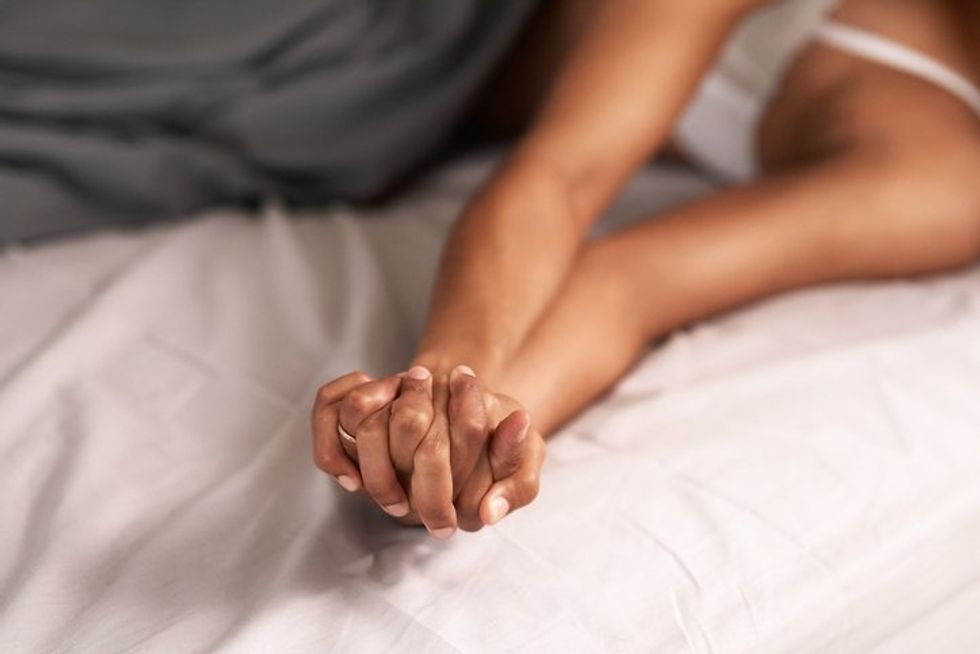 iStock.com/PeopleImages
iStock.com/PeopleImages
Here’s what I told Cara and what I tell all my clients craving more passion in their everyday lives.
“First of all, you know it’s still in there,” I told her. “You were concerned you’d never get your desire back, but it woke up! That’s a big win. Now we have to think critically about what worked and discuss how to apply the same principles at home.”
1. Prioritize intimacy. There will always be someone or something trying to pull your attention away. This plan will only work if you set aside sacred, untouchable time every week. You don’t have to have full-on sex each week, but having about half an hour to connect physically and emotionally without interruption will help keep the energy from dying out completely.
2. Encourage bad behavior. Cara looked at me skeptically. I explained. You and Jake are burdened by a lot of heavy adult responsibilities. See what happens when you play hooky from work and go out for margaritas, reminiscent of afternoons on vacation. Sneak into a local five-star hotel and make use of the pool. Little things like this aren’t really that “bad,” but can go a long way in making you feel playful, which will help boost desire.
3. Play with your plans. Just because you plan when you have sex, doesn’t mean you have to plan how you do it. There’s still plenty of room for spontaneity in the types of things you explore in the time you’ve strategically set aside. And remember to use this time to explore touch, playfulness or massage with no goal beyond connection. When sex becomes one more routine item on a checklist, the spark fizzles.
4. Make a transition. On vacation, there’s time to unwind before bed. At home, try creating a “buffer zone” between your workday and couple time — a walk, a shower, a shared glass of wine. These rituals can help your body shift gears and prime you for intimacy.
5. Take your time. This is probably one of the most important tools. Vacation sex isn’t rushed, but sex at home … that’s another story for most folks. It takes an average of 12-15 minutes to get into a focused state. Most people don’t have sex that long. And a lot of people worry that if they don’t feel focused right away, they simply won’t. Give your body the time it needs to relax and your mind the time it needs to quiet down. Pleasure will follow.
I reminded Cara and Jake that vacation sex wasn’t about the beach. It was about their mindset of presence, play and prioritizing pleasure. Armed with a new perspective and a refreshed purpose, Cara and Jake left my office that day with a smile not just of nostalgia, but of possibility.
In the weeks that followed, they didn’t hop a flight to Cabo, but they did make meaningful changes. They began “Sensual Sundays,” where phones went off, chores were ignored and they treated the day like a mini escape. One week it was brunch and day drinks. Another it was a shared bath and lazy afternoon in bed. With intention, creativity and play, they rekindled a connection they feared was lost.
From Your Site Articles
Related Articles Around the Web
Danni Levy is one of Britain’s most celebrated media health figures. Her career began as a British television host on multiple high profile SKY shows, before becoming a renowned author under Penguin publishing house and establishing a career as a respected editor. In addition to her journalism work, Danni appears on magazine covers and supports health and fitness campaigns worldwide, having earned the crown for the most consistently lean woman in the British media.
Danni’s ability to retain a shredded physique catapulted into the international press when she became mother of a little boy who is now two years old displaying her “stage ready” body at 9 months pregnant as she lifted weights and ran for miles with her baby bump in tow. Danni has now launched SuperMum, a fitness plan designed exclusively for pregnant women and mums to enable them to continue enjoying training during and after pregnancy without fear or shame, and knowing their body is fully supported nutritionally and that exercise when done right will not harm their baby or their body.
Danni’s body was in optimal shape just one week after giving birth. She was hill running 8 km up mountains the day before she gave birth. She really wants to quash the stigma surrounding pregnancy and exercise. She also wants to support new mums who may be struggling with diet and exercise with babies and toddlers because she appreciates it’s an uphill battle, especially with sleepless nights.
Women Fitness President Ms. Namita Nayyar catches up with Danni Levy – an exceptionally talented and accomplished Fitness Trainer, Writer and Journalist. Here she talks about her fitness routine, her diet, prenatal & postnatal health and her success story.
Your fitness routines are widely admired. Could you walk us through your current personal exercise regimen and how it’s evolved over your career?
Thank you, that’s so kind of you. I’ve never been a fan of long workouts and I’ve always preferred training first thing in the morning. I usually have breakfast (I never train fasted) and then either do a 40 minute mountainous run, or head to the gym for a weights session.
I train supersets and normally pack two body parts into 45-minutes in the gym. I used to do cardio post-weights, but now, I either run or lift. Running such an arduous route has definitely taken my results up a notch and there’s nothing like it for mental clarity.
Weights wise, I lift lighter than I used to. People often ask how much I lift for shoulders because aesthetically, they’re one of my strongest areas, but I only use 4kgs for flies!

How do you balance functional fitness, strength training, and mental wellness in your workouts?
Strength training for aesthetics and running for mental wellness. Being a hybrid athlete naturally ensures you’re functionally fit. I’m not someone who can sit and meditate. Running is my meditation. I never train with music, not even in the gym. When I’m training, I’m in the zone and that’s when my brain churns out ideas at 1000 miles an hour.
What are the most common misconceptions about prenatal exercise, and how do you address them in your programs?
I always presumed that if and when I fell pregnant, I’d have to entirely change my workout program or worse still, stop training altogether. Of course, every woman is different and for some, running or lifting during the second and third trimester can be challenging due to excess water retention, weight on the joints or a supersized bump (which I didn’t have).
I was so lucky in that I was able to continue exactly the same routine, save for some small but fundamental adaptations to ensure all movements were safe for my baby.
I ran four times a week (8km up mountains) and right up until the day before I gave birth! I also continued to lift in the gym and was able to enjoy pretty much the same range of movement I had pre-pregnancy. Yes, I was “lucky,” but also, the reason this was possible was because each and every day I was consistent and my body adapted slowly to enable it to evolve with my the biological changes it was experiencing. The human body is an incredible thing, you just have to look after it, and that doesn’t mean sitting on the couch all day- even if you are carrying a baby.

How do you adapt workouts for postpartum recovery while ensuring safety and effectiveness?
Postpartum it can be really tempting to just get back out there and smash your “bounce back” body goals, especially if you’re a fitness fanatic. This is a time to rest and bond with your baby, whilst enjoying brisk walks, lots of fresh air and light, controlled workouts that don’t compromise the laxity of the joints.
Full Interview is Continued on Next Page
This interview is exclusive and taken by Namita Nayyar President of womenfitness.net and should not be reproduced, copied, or hosted in part or full anywhere without express permission.
All Written Content Copyright © 2025 Women Fitness
Disclaimer
The Content is not intended to be a substitute for professional medical advice, diagnosis, or treatment. Always seek the advice of your physician or other qualified health provider with any questions you may have regarding a medical condition.
A crying baby can be bothersome, especially when bedtime turns into a battleground. Enter the 5 S’s—a calming technique developed by renowned pediatrician Dr. Harvey Karp.
Used consistently, the 5 S’s can become part of your baby’s nighttime routine—helping reduce fussiness, easing the transition to sleep, and creating a more peaceful bedtime for the whole family. Whether your little one is overtired, colicky, or just needs help winding down, the 5 S’s offer a gentle, effective approach to comfort and rest.
These five simple steps mimic the womb environment, triggering your baby’s natural calming reflex to help them feel secure and settled.
1. Swaddling
Swaddling is the practice of snugly wrapping your baby in a lightweight blanket to mimic the close confines of the womb. This technique prevents the Moro reflex—or startle reflex—that can cause babies to wake suddenly or cry out. A properly swaddled baby feels secure, warm, and comforted, which naturally helps reduce fussiness. Just make sure to leave enough room for the hips to move and always stop swaddling once your baby starts rolling over.
For bedtime, use a breathable cotton or muslin swaddle and keep the room at a comfortable temperature to avoid overheating.
2. Side or Stomach Position (for soothing only)
Holding your baby on their side or stomach (never for sleep, only while in your arms) can be incredibly calming. These positions reduce the baby’s internal stress and help activate their calming reflex. Some parents find the “football hold” or placing the baby tummy-down on their forearm particularly effective.
Always place babies on their back for sleep to reduce the risk of SIDS (Sudden infant death syndrome, sometimes known as cot death or crib death).
Use the side or stomach position only for soothing when the baby is awake and under your watch.
3. Shushing
Babies spend months in the womb surrounded by loud whooshing noises—from blood flow to digestion. Recreating that sound with rhythmic “shhhhhh” noises, white noise machines, or even apps can help drown out external stimuli and settle a crying baby. The key is volume—match the intensity of your baby’s cry at first, then gradually soften it.
Nighttime tip: Consider using a white noise machine or a fan (safely placed) to provide continuous background noise during sleep. It helps not only soothe but also mask household sounds that might wake the baby.
4. Swinging (or Swaying/Rocking)
Gentle motion is deeply soothing for infants. Whether it’s rocking in your arms, walking around with a baby in a carrier, or using a baby swing (safely and supervised), movement mimics the jostling they experienced in the womb. Swinging helps calm the nervous system and can reduce crying almost instantly.
Bedtime note: Avoid vigorous shaking or fast motion. Gentle, rhythmic movements are best, and never leave a baby unattended in a swing, especially for overnight sleep.
5. Sucking
Sucking is a powerful self-soothing mechanism for babies. It releases endorphins and helps regulate their breathing and heart rate. Whether through breastfeeding, a bottle, or a pacifier, sucking can quickly quiet cries and ease your baby into a restful state.
A pacifier can be a lifesaver for middle-of-the-night wake-ups. Studies also show that pacifier use during sleep can reduce the risk of SIDS—just make sure it’s used safely and not forced if your baby resists.

Soothing a crying baby doesn’t have to feel like guesswork. The 5 S’s—Swaddling, Side/Stomach position, Shushing, Swinging, and Sucking—offer a gentle, effective, and research-backed method to calm your little one and promote better sleep. When practiced consistently, these techniques not only help reduce crying spells but also strengthen the bond between you and your baby by creating a sense of safety and comfort.
Disclaimer
The Content is not intended to be a substitute for professional medical advice, diagnosis, or treatment. Always seek the advice of your physician or other qualified health provider with any questions you may have regarding a medical condition.
La lipoproteína (a) podría sonar como un labial para aumentar el volumen y la sensualidad de los labios, pero eso es incorrecto.
La lipoproteína (a) o Lp(a) es una partícula que se encuentra en tu sangre. Esta partícula transporta al colesterol y puede afectar tu riesgo de trastornos cardíacos, así que vale la pena saber más y hacer que se revisen tus niveles mediante pruebas de sangre.
Si bien los hábitos de tu estilo de vida pueden ejercer influencia en tu riesgo de tener niveles altos de Lp(a), estos se determinan principalmente por los genes que heredaste. Puesto que muchas personas que tienen niveles elevados de Lp(a) no tienen ningún síntoma, hablar de tus factores personales de riesgo con tu proveedor de atención médica (HCP, por sus siglas en inglés) es crucial para entender el panorama completo de tu salud cardiaca.
Obtén más información de la lipoproteína (a), incluyendo de los factores de riesgo, las pruebas, los resultados y cómo manejar niveles elevados.
¿Qué es el colesterol oculto?
La lipoproteína (a) se conoce también como el “colesterol oculto” porque las pruebas estándar de colesterol no lo detectan y frecuentemente no hay síntomas. La Lp(a) es una lipoproteína plasmática, es decir, una partícula que transporta grasas, tales como el colesterol, en tu sangre
Si bien los investigadores no comprenden completamente la función de la Lp(a), niveles altos se asocian a problemas cardiacos. Eso se debe a que niveles elevados de Lp(a) pueden acumularse en las paredes de tus vasos sanguíneos, causando placa (depósitos grasos) que hacen que los vasos sanguíneos se vuelvan más estrechos, lo cual dificulta el flujo sanguíneo y causa obstrucciones que pueden dar paso a ataques cardíacos o accidentes cardiovasculares.
¿Por qué debería conocer mis niveles de lipoproteínas (a)?
Conocer tus niveles de Lp(a) puede ser útil para que tomes medidas proactivas para que te protejas contra problemas cardíacos si fuese necesario. Niveles elevados de Lp(a) pueden incrementar el riesgo de:
La probabilidad de que ocurran estos eventos es mayor si tienes antecedentes familiares de niveles altos de colesterol de LBD, hipercolesterolemia familiar (HF) o señales de enfermedades cardíacas coronarias. Incluso si tus otros niveles de colesterol son normales (incluyendo las LBD) o están bien controlados, tener niveles elevados de Lp(a) aumenta el riesgo de problemas cardiacos. Conocer tus niveles puede proporcionar un panorama más completo de tu riesgo general de enfermedades cardiovasculares.
¿De qué depende tu nivel de Lp(a)?
Tus niveles de Lp(a) dependen casi por completo de tu genética. Hay un gen específico llamado LPA que se hereda de tus padres, lo cual explica por qué niveles altos frecuentemente se dan para familias enteras.
Esto significa que, a diferencia de otros tipos de colesterol, los niveles de Lp(a) no cambian mucho por cambios del estilo de vida tales como dietas y ejercicio. Sin embargo, hábitos saludables de estilo de vida todavía podrían tener un impacto importante en tu salud cardiaca general y en tu bienestar.
Los niveles de Lp(a) pueden variar para diferentes grupos étnicos. Por ejemplo, investigaciones indican que personas de ascendencia africana y del sur de Asia tienden a tener mayores niveles de Lp(a) en comparación con personas de raza blanca, asiáticas e hispanas. Un estudio de 2024 publicado en Journal of Clinical Lipidology [Revista de lipidología clínica] también identificó que dentro de sus grupos de pacientes, las personas de raza negra hispanas y no hispanas tuvieron mayores niveles de Lp(a).
¿Cómo se identifican los niveles de lipoproteínas (a)?
Las Lp(a) se analizan con una simple extracción de sangre que evalúa los niveles de lipoproteínas (a) en el suero. Esta prueba no siempre es parte de un perfil rutinario de pruebas del colesterol, así que si piensas que deberías someterte a pruebas, deberías solicitarlas específicamente.
Niveles altos de Lp(a) frecuentemente no causan síntomas, pero tu proveedor de atención médica podría hacer pruebas si tienes mala circulación en las piernas; antecedentes de ataques cardíacos o accidentes cardiovasculares a una edad temprana (antes de los 65 años para las mujeres), especialmente sin otros riesgos comunes; o antecedentes familiares de problemas cardíacos prematuros, niveles altos confirmados de Lp(a); niveles altos de colesterol o hipercolesterolemia familiar (HF).
La HF es un trastorno genético que causa niveles altos de LBD desde el nacimiento. Puesto que se estima que 9 de cada 10 personas con HF no saben que lo tienen, hablar de tus antecedentes familiares con tu proveedor de atención médica es importante para que se maneje y se hagan pruebas apropiadamente.
Incluso si personas tienen un mayor riesgo de enfermedades cardíacas, las pruebas no tienden a solicitarse con la frecuencia debida, según las investigaciones, especialmente en comunidades marginadas, incluyendo pacientes de raza negra hispanos y no hispanos con menores ingresos y que viven en vecindarios menos favorecidos. Las disparidades de las pruebas implican que es posible que personas que tienen riesgo no se identifiquen o no tengan acceso al cuidado que merecen.
¿Cuál es el significado de los resultados de las pruebas de lipoproteínas (a)?
Los niveles de Lp(a) se miden comúnmente en miligramos por decilitro (mg/L) o nanomoles por litro. Un nivel que supera los 50 mg/dL o 125 nmol/L se asocia generalmente a un mayor riesgo de problemas cardíacos. Niveles saludables generalmente son menores que 30 mg/dL o 75 nmol/L, pero las pautas pueden variar dependiendo del método o del laboratorio específico que se use.
El riesgo aumenta con los resultados de Lp(a), así que entre mayor sea el nivel, mayor es el riesgo. Es crucial hablar sobre tus resultados con un proveedor de atención médica.
¿Qué debo hacer si tengo niveles altos de Lp(a)?
Según los Centros para la prevención y control de enfermedades (CDC, por sus siglas en inglés), no hay terapias aprobadas por la FDA [Administración de medicamentos y alimentos] específicas para controlar las Lp(a) y los tratamientos son limitados, aunque algunos medicamentos podrían ser útiles, tales como el ácido nicotínico, la aspirina y algunos medicamentos que reducen el colesterol.
Otras opciones incluyen un procedimiento específico que remueve las Lp(a) de la sangre, pero esto se reserva para pacientes de muy alto riesgo. Se están investigando nuevos tratamientos que muestran resultados prometedores, algunos de los cuales podrían estar disponibles pronto, según la Asociación estadounidense del corazón. Habla con tu proveedor de atención médica acerca de tus opciones terapéuticas.
En general, es conveniente adoptar hábitos que sean útiles para reducir tu riesgo general de enfermedades cardiacas:
Este recurso educativo se preparó con el apoyo de Novartis.
Related Articles Around the Web
July is Fibroid Awareness Month.
Fibroids can be life-changing — and not in a good way. Up to 8 out of 10 women develop fibroids by the time they turn 50, and that can mean debilitating cramps and soak-through-your-good-leggings bleeding during your period.
Research is ongoing as to why women and people assigned female at birth (AFAB) get fibroids, but certain factors like family history and race may increase your risk. For example, fibroids are up to three times more common in Black women, and Black women tend to be diagnosed with fibroids at a younger age, experience more severe symptoms, and have higher rates of surgery and hospitalization compared to white women.
Read: There’s Nothing Normal About Uterine Fibroids >>
Unfortunately, it can take years to get a proper diagnosis. A lack of awareness about fibroids and period stigma can keep people from getting the care they need.
So, how much do you know about fibroids? Take our quiz to find out and learn interesting facts to share with your uterus-loving friends.
From Your Site Articles
Related Articles Around the Web
July is Dry Eye Awareness Month.
Blink twice if you’re reading this. How do your eyes feel?
Are they irritated? Do you feel like you have grains of sand in your eyes but you’re nowhere near the beach? Do you have an autoimmune disease?
That last question may seem random, but having an autoimmune disease puts you at higher risk for dry eye disease — a chronic condition that causes symptoms like grainy eyes and loss of vision if not treated.
“If you have dry eye that persists and it’s not just episodic, get in to see an ophthalmologist. And that’s important especially if you have a family history [of autoimmune disease] or you have other systemic problems,” said Mina Massaro, M.D., a professor of clinical ophthalmology at the Scheie Eye Institute and upcoming director of dry eye services at NYU Langone Health.
It’s also important for women and people assigned female at birth (AFAB) to note the connection between autoimmune disease and dry eye disease, since both conditions are more common in women than men.
Read: What You Need to Know About Dry Eye Disease >>
What is dry eye disease?
Dry eye disease is a disorder that affects the tear film, which helps protect and moisturize your eyes.
There are two main types of dry eye disease:
Symptoms of dry eye disease can range from redness and grittiness to blurred vision, eye pain and changes in eyesight. Without treatment, dry eye disease can seriously impact your vision and quality of life.
Autoimmune diseases happen when the body’s immune system mistakenly attacks healthy organs, cells and tissues. And that can include the tear glands, which causes a decrease in tear production and leads to inflammation and damage on the surface of the eye.
Chronic eye inflammation also affects the oil glands, and without oil, your tears evaporate too soon.
Together, reduced tears, lack of oil and the presence of inflammation can all lead to dry eye disease, a condition that gets worse over time without treatment.
“There are various autoimmune conditions that attack or create inflammation in glands and tissues that are responsible for creating tears,” Massaro said.
Common autoimmune diseases associated with dry eye disease can include:
Treatment for dry eye disease
“All the autoimmune conditions will somehow affect the lacrimal gland [located in the eye], so the treatment for most cases will be similar,” Massaro said. “We’ll put patients on anti-inflammatory drops; we will put them on lubricating drops — and this goes for pretty much all the autoimmune conditions.”
In addition to eye drops, eye care providers may use prescription treatments that increase tear production or medical devices involving light or heat to help treat symptoms and lubricate eyes. Silicone plugs can help keep tears on the eyes for a longer period of time. “Sometimes we can prescribe specialized contact lenses on the surface of the eyes to prevent evaporation,” Massaro said.
There are also lifestyle changes that can help ease symptoms of dry eye disease. These include:
Clear communication is key
Autoimmune diseases are complex and often require different treatments and medications — and some of those medications can make symptoms of dry eye disease worse. That’s why it’s important to keep your healthcare providers — including your eye care provider — in the loop regarding your treatment plans and any changes in your vision.
“The collaboration is critical, and the communication is critical,” Massaro said.
When it comes to living with dry eye disease and autoimmune disease, there’s no “I” in team.
This educational resource was created with support from Viatris, a HealthyWomen Corporate Advisory Council member.
From Your Site Articles
Related Articles Around the Web
Endometrial cancer is cancer that forms in the lining of the uterus, which is called the endometrium. It is the fourth most common cancer for women in the United States and affects 1 in 50 women.
The good news? Doctors have many tools for treating endometrial cancer, and they work well, especially when the cancer is caught early. More than 80% of women diagnosed with endometrial cancer are alive five years later — and this number jumps to 95% if the cancer hasn’t spread outside the uterus.
Understanding the treatment options for endometrial cancer — including surgery, radiation and medication — can help you prepare for the road ahead. We spoke with Nita Lee, MD, associate professor of obstetrics and gynecology at the University of Chicago, about how endometrial cancer is treated.
What types of surgery are used for endometrial cancer?
These days, the most common surgery is minimally invasive (done through tiny cuts) laparoscopic or robotic surgery. We use this type of surgery for most endometrial cancer patients to remove the uterus and fallopian tubes and collect information about the lymph nodes.
If patients have more advanced disease that has spread to the lymph nodes or ovaries, or if the uterus is too large to do minimally invasive surgery, they may need to have open abdominal surgery.
What role does radiation therapy play in treating endometrial cancer?
Radiation therapy is most commonly used as an additional treatment after surgery. Care after surgery, called post-operative care, sometimes can involve radiation therapy based on certain findings at the time of surgery.
For example, if a person has certain risk factors in the uterus, their healthcare provider (HCP) might recommend they have vaginal radiation, or perhaps more involved pelvic radiation. Or if they have certain factors, such as cancer being found in the cervix after it was surgically removed, they may need radiation of the pelvic area.
Some patients with more advanced disease that involves the lymph nodes will get radiation in addition to chemotherapy. Occasionally, patients who are not eligible for surgery and who don’t want fertility-sparing treatment will get radiation only, but that’s fairly rare. It really varies depending on the patient.
What systemic (total body) treatments are used for endometrial cancer?
People with stage 1 disease who have certain high-risk cell types also get chemotherapy after surgery.
While chemotherapy drugs typically act on the cancer cells themselves, immunotherapy is designed to help your body’s immune system attack the cancer.
One of the ways cancer cells get by your immune system is by hiding behind or making certain proteins so that your body doesn’t recognize the cancer cells as bad. Immunotherapy helps uncover the cancer.
Immunotherapy works best for certain categories of endometrial cancer, meaning it works better for some people than others. It’s been a game changer for recurrent endometrial cancer patients, as well as those who are diagnosed at an advanced stage.
Are there fertility-sparing treatments available for endometrial cancer?
Yes. Hormone therapy is the most common treatment for patients who are concerned about fertility. Usually we tend to limit fertility-sparing treatment to patients with stage 1 disease and those with lower-risk types of endometrial cancer (versus those with high-risk cell types).
What factors are considered when making treatment decisions?
A lot of our treatment decisions are based on the patient’s molecular profile, which looks at the tumor cells and the biomarkers and tells us exactly what type of endometrial cancer they have and whether the tumor will respond to certain treatments. We also look at any other health problems they may have and their goals for treatment, and we always want to balance quality of life.
This educational resource was created with support from Karyopharm.
From Your Site Articles
Related Articles Around the Web
July is Graves’ Disease Awareness Month.
Graves’ disease is an autoimmune condition that mainly affects your thyroid. Prompt diagnosis and treatment is important because, without treatment, the disease can lead to serious health problems such as heart failure and osteoporosis. This is especially important to note because women and people assigned female at birth are at higher risk for Graves’ disease as well as heart failure and osteoporosis.
People with Graves’ disease can experience a wide range of symptoms, but some of the most recognizable signs are swelling in the neck around the thyroid area and bulging eyes.
If you or someone you know has — or may have — Graves’ disease, here’s what you need to know about this complex health condition.
Graves’ disease is a condition where the immune system creates antibodies called thyroid stimulating immunoglobulin (TSI) that stimulate the thyroid and cause it to make more thyroid hormones than you need. The excess thyroid hormones speed up metabolism and can cause serious physical and mental health issues, such as irregular heartbeat and anxiety.
In the U.S., Graves’ disease is the most common cause of overactive thyroid, also called hyperthyroidism. In fact, about 4 out of 5 cases of hyperthyroidism are caused by Graves’ disease.
Research is ongoing as to the exact cause of Graves’ disease. But researchers think a combination of genetics and environmental factors, such as a virus or stress, may trigger the immune system to overstimulate the thyroid gland.
Although the cause of Graves’ disease is unknown, there are risk factors that can make you more likely to develop the disease.
Risk factors for Graves’ disease include:
The symptoms of Graves’ disease can vary from person to person and may come and go over time.
Symptoms of Graves’ disease include:
It’s also common for people with Graves’ disease to develop an associated eye disease. More than 1 in 3 people develop the eye disease called thyroid eye disease (TED).
Symptoms of thyroid eye disease can include:
It is possible for people with Graves’ disease to have healthy pregnancies as long as the condition is well controlled.
Thyroid hormone levels that are too high may cause complications for the person carrying the baby as well as the unborn child. Premature birth, low birthweight, preeclampsia and miscarriage have all been linked to high levels of thyroid hormone.
Pregnant people with Graves’ disease are also at higher risk for experiencing a severe increase in symptoms called thyroid storm, which is rare but can be life-threatening.
There is a possibility that high levels of the TSI antibodies can cause overactive thyroid in the fetus — but it’s rare. So, it’s important to test for antibodies and thyroid hormone levels before getting pregnant. And talk to your healthcare provider about your current and past treatments for Graves’ disease because some medications may increase the risk for birth defects.
There is no cure for Graves’ disease, but there are treatment options that can help you manage the condition. Antithyroid medications, for example, stop the gland from producing thyroid hormones to help regulate levels.
Beta-blockers, on the other hand, don’t stop the thyroid from making hormones, but can be helpful for treating Graves’ disease symptoms such as rapid heartbeat, tremors and anxiety.
Radioactive iodine therapy — an oral medication that gradually destroys the thyroid cells that make thyroid hormones — is an option but it’s not as commonly prescribed as antithyroid drugs.
People with Graves’ disease may also consider a thyroidectomy — surgery to remove the thyroid.
Unfortunately, there’s been little advancement in treatment options for Graves’ disease over the past 75 years despite the fact that many people can’t tolerate the side effects of their current treatment — and that the available medications just don’t work for some people.
The lack of innovation is why clinical trials are so important. Currently, there are several potential new treatments being studied for Graves’ disease, including oral small molecule, monoclonal antibody and peptide immunomodulation options that can block or reduce the antibodies that cause hyperthyroidism in Graves’ disease.
Still, there’s a lot of research that needs to be done regarding treatments and finding a cure for Graves’ disease. If you’re living with Graves’ disease, talk to your healthcare provider about clinical trials and whether joining a clinical trial is an option for you. You can find more information about active Graves’ disease clinical trials at clinicaltrials.gov.
Graves’ disease can have serious complications. More research means more information to help find a cure.
This educational resource was created with support from Immunovant, a HealthyWomen Corporate Advisory Council member.
From Your Site Articles
Related Articles Around the Web
By Christina Flach, Celebrity Makeup Artist & Founder of ITB Brands
When the world finally quiets down and the hustle fades into moonlight, your skin is ready for its most essential moment: renewal. Your nighttime skincare ritual isn’t just a routine—it’s a sacred act of self-love and restoration.
Cleanse with Intention – The first step is non-negotiable. Gently remove the day—makeup, pollution, sweat, and stress—with a hydrating, non-stripping cleanser. Take your time. Think of it as wiping away everything that no longer serves you, emotionally and physically.
Remove All Eye Makeup (Yes, All of It) . One of the biggest skincare sins? Sleeping in your mascara! Not only does it dry out your lashes, but it can also lead to eye irritation, puffiness, and even lash breakage. A great trick: use a nourishing face oil (like jojoba, almond, or coconut oil) to gently dissolve mascara and eyeliner—it breaks down even the most stubborn formulas while conditioning your lashes. Follow that with a soft wipe or warm cloth, then double-cleanse if needed. Your eyes will feel fresher, and your lashes will thank you.
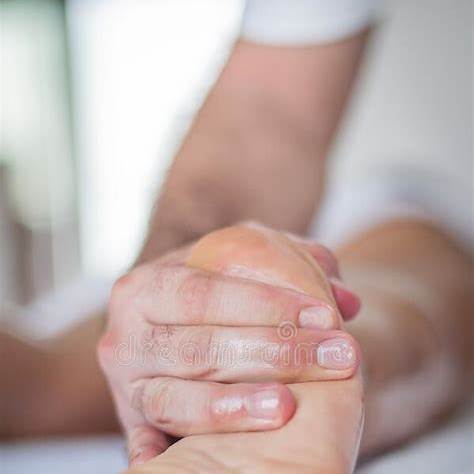
Tone and Balance: A toner preps the skin to better absorb what comes next. Choose one that hydrates and soothes, especially if your skin is reactive or dry. Bonus points if it smells like a spa—your senses deserve care, too. SK-II facial Treatment Lotion Toner exfoliates skin with 3 deeply penetrating acids, improves dullness and texture, plus contains 50 micronutrients to fortify your skin.
Treatment Time: Serums That Work While You Sleep . Nighttime is ideal for ingredients like retinol, peptides, or brightening botanicals. I love layering on Neolastin Regenerative Serum to help stimulate cell turnover and support collagen while I dream.

Organic Castor Oil Magic– One of my favorite underrated nighttime secrets? Organic castor oil. Packed with fatty acids and anti-inflammatory properties, it helps detoxify the skin, soften fine lines, and boost radiance. I gently massage it into my face a few times a week for deep nourishment and that extra glow. Organic castor oil is a lash-loving miracle that deeply nourishes and conditions for thicker, longer, and stronger lashes. Rich in ricinoleic acid, it supports healthy follicle growth while moisturizing each lash to prevent breakage and shedding, especially important if you wear mascara daily. Gentle and natural, it’s ideal for the sensitive eye area and even offers anti-inflammatory and antimicrobial benefits. Simply apply a small amount with a clean spoolie before bed, and with consistent use, you’ll notice fuller, healthier lashes in just a few weeks. It’s one of my favorite nighttime beauty secrets—simple, powerful, and worth the ritual.
Lock in Moisture Like a Queen: Seal all that goodness in with a nourishing moisturizer. Look for ingredients like ceramides, hyaluronic acid, and antioxidants. Don’t forget your neck and décolletage—they deserve the same love.
Eye Cream is Not Optional : Your under-eye skin is the thinnest on your face, and it’s often the first to show signs of fatigue. Gently press an eye cream to hydrate and combat puffiness or dark circles.
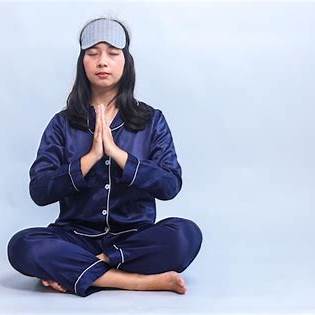
Foot Massage: Grounding Your Body, Soothing Your Soul . Before slipping into bed, take a few moments to massage your feet with a nourishing balm or oil. This simple act improves circulation, supports lymphatic flow, and tells your nervous system: it’s time to relax. Your entire body (and your sleep) will thank you.
Let your final skincare ritual be a few moments of peace. Breathe deeply, stretch, journal, or sip tea. Stress shows on your skin, and calm is the best beauty treatment of all. Happiness and being well-rested show in your eyes, skin, and mood.
End with Gratitude + Guided Calm : The energy you go to sleep with sets the tone for tomorrow. Take a minute to reflect on what you’re grateful for—big or small. Then, let your mind unwind with a meditation from apps like Calm (Free 7 day Trial) or Breethe. Ending the day with positive, loving thoughts helps you sleep deeper, dream sweeter, and wake up truly glowing.

I get it—this might sound like a full-time job before bed. But beauty sleep isn’t just a saying, it’s a lifestyle.
Just as muscles adapt to the same workout, your skin can acclimate to using the same products night after night. Rotating between targeted treatments—such as nutrient-rich face oils, hydrating creams, exfoliating acids, and active serums—can help optimize absorption, prevent stagnation, and address your skin’s ever-changing needs. This dynamic approach encourages cellular renewal and helps avoid product fatigue. By thoughtfully switching up your nighttime skincare, you’re keeping your skin responsive, balanced, and glowing long-term. Trust me, the result is worth every minute.
Disclaimer
The Content is not intended to be a substitute for professional medical advice, diagnosis, or treatment. Always seek the advice of your physician or other qualified health provider with any questions you may have regarding a medical condition.
Smart, satisfying, and nutrient-dense, cauliflower is a must-have in the kitchen for those who prioritize wellness without compromising on flavor. This powerhouse vegetable is rich in fiber, antioxidants, and essential vitamins like C and K, making it ideal for supporting digestion, hormonal balance, and overall health. Its mild flavor and adaptable texture make it the perfect ingredient for guilt-free comfort foods and creative low-carb swaps.
Whether you’re meal-prepping, managing macros, or simply nourishing your body with clean ingredients, these cauliflower recipes by Chef Liana Werner‑Gray are designed to fuel your goals—deliciously.
Total time: 50 minutes
Ingredients:
Fries
Cauliflower “Cheese”
Instructions:
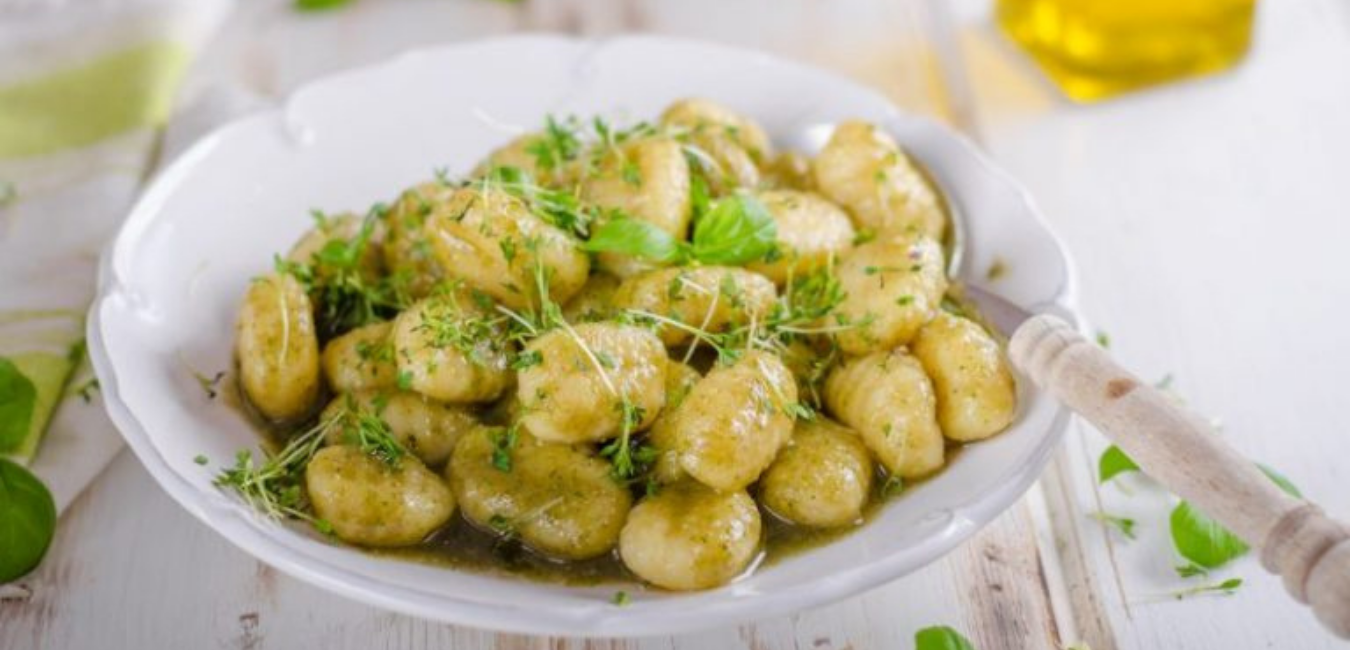
Total Time: 45 minutes
Serves: 4
Ingredients:
Instructions:
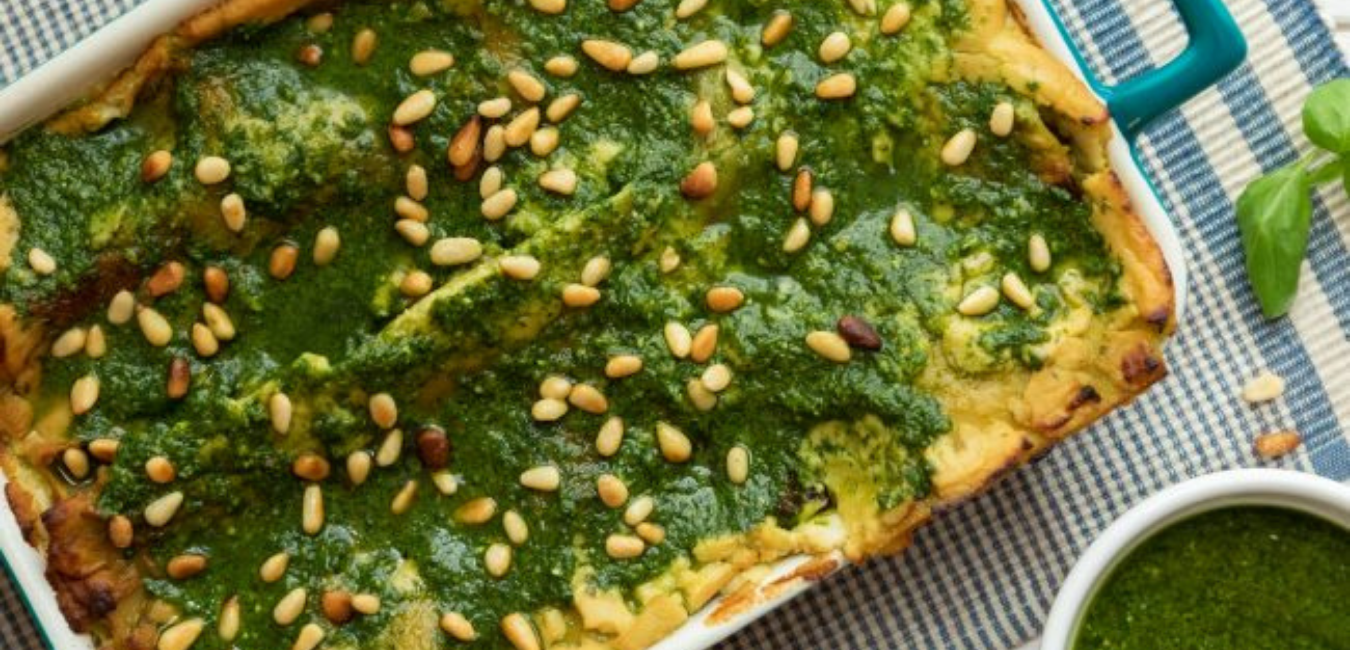
Total Time: 1 hour
Servings: 4
Ingredients:
Pesto Sauce
Cauliflower Alfredo Sauce
Lasagna
Instructions:
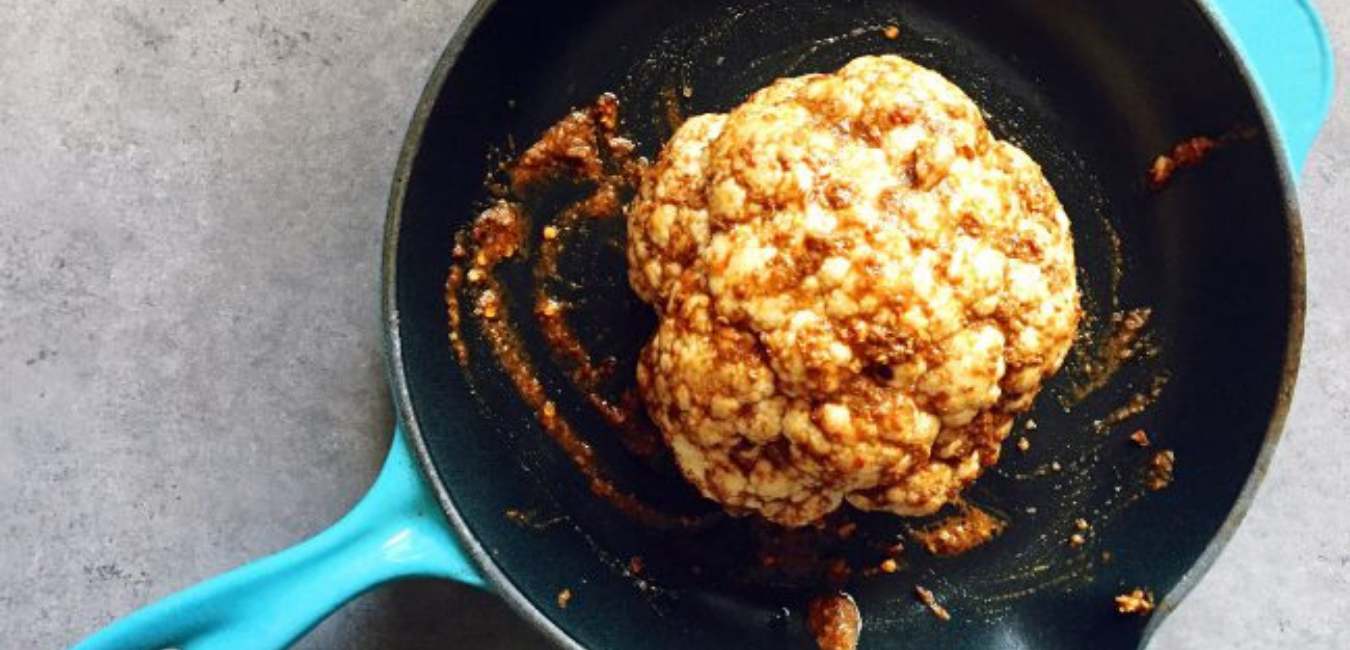
Servings: 4-6
Ingredients:
Instructions:

Total time: 35 minutes
Serves: 4
Ingredients:
Instructions:
About the author:
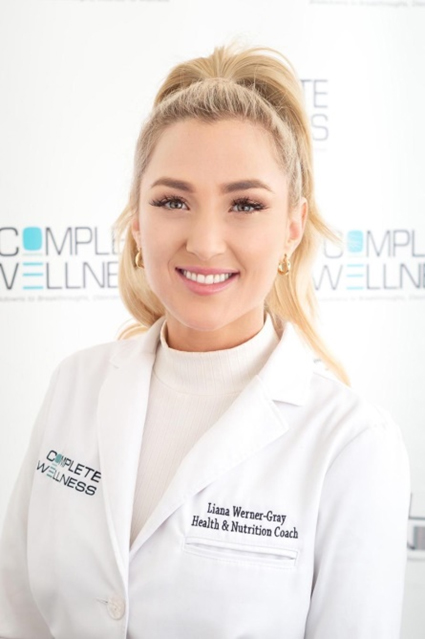
Liana Werner-Gray is a certified nutritionist, natural food chef, and four-time best-selling author best known for founding The Earth Diet. Originally from Australia and now based in New York City, she turned to natural healing after being diagnosed with a precancerous tumor in her early twenties. Embracing a whole-food, earth-based diet, she documented her journey online, which led to her first book and a global following. Today, Liana empowers others to heal through nutrition and lifestyle changes, blending Indigenous wisdom with modern wellness.
Disclaimer
The Content is not intended to be a substitute for professional medical advice, diagnosis, or treatment. Always seek the advice of your physician or other qualified health provider with any questions you may have regarding a medical condition.